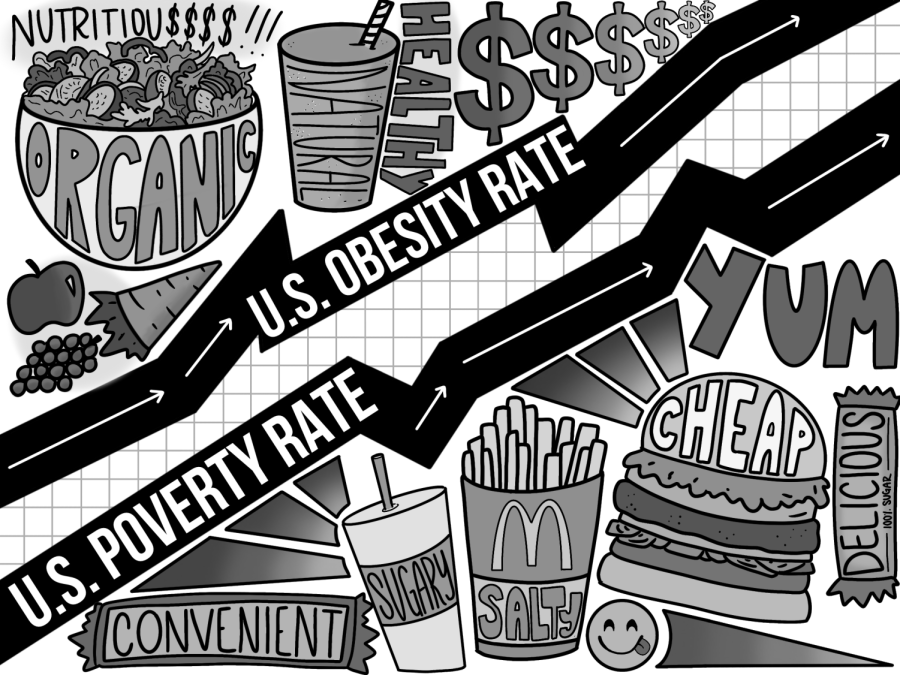OPINION: American poverty breeds obesity
From 1980 to 2020, the CDC has reported that obesity rates in the U.S. have increased from 13.4% to 41.9%. This dramatic increase has had a significant impact on the health system and the well-being of millions of Americans. The rise in obesity across America is detrimental to the population and is an inevitability as the financial gap grows.
As the rates of obesity have risen, so has the divide between the social classes in the United States, as reported by Pew Research. This financial gap has grown since the 1980s, and has created a poorer lower middle class that relies on cost-cutting measures to survive. Although the financial gap is not unique to the U.S., it has one of the largest financial inequalities of any developed country, according to the Council on Foreign Relations.
The rise in financial inequality is one of the major factors affecting the rise in obesity rates in the country, with the problem only worsening as the gap grows. One factor causing the rise is the immense costs it takes to remain healthy in the modern age.
A study conducted by the Harvard School of Public Health demonstrated the difference in price to eat healthily as opposed to buying cheaper, less healthy foods. The study reported that on average, eating healthy costs around $1.50 more every day, which adds up to approximately $540 more a year per person, which can strain smaller food budgets in a household.
These price differences are caused by less healthy foods being easier to produce en masse, which allows for cheaper sales and encourages unhealthy eating. The direct correlation has been observed in communities with higher rates of poverty. According to the NIH, the rates of obesity in a county with a poverty rate of >35% are substantially higher at 145% opposed to more wealthy counties.
The impoverished areas also have a disadvantage to health that intensifies an already major issue. Areas often suffer from lack of access to fresh food and food varieties, creating a shortage of vital nutrients and making it exceedingly difficult to maintain a balanced diet as recommended by health experts.
These shortages are known as “food deserts” and are prevalent across the U.S. The problem most often appears in areas with lower incomes and lack of access to other amenities, such as good education. Although there are numerous factors that cause food deserts, impoverished areas face a high risk of becoming a food desert, especially during food shortages and crises like COVID-19.
There is no quick fix for such a complex and intricate issue as food shortages, yet progress has been made. Programs such as the Supplemental Nutrition Assistance Program provide resources for low-income citizens to gain access to food and alleviate some of the problems in the system caused by the financial inequality.
Although there has been success from SNAP and charities tackling the issue, the problem remains critical and the cause of the inequalities are deeply rooted in the American wealth and health systems. Only through the lessening of the wealth gap and the equalizing of food availability, both in stores and price, can the obesity epidemic be truly managed and ended.


